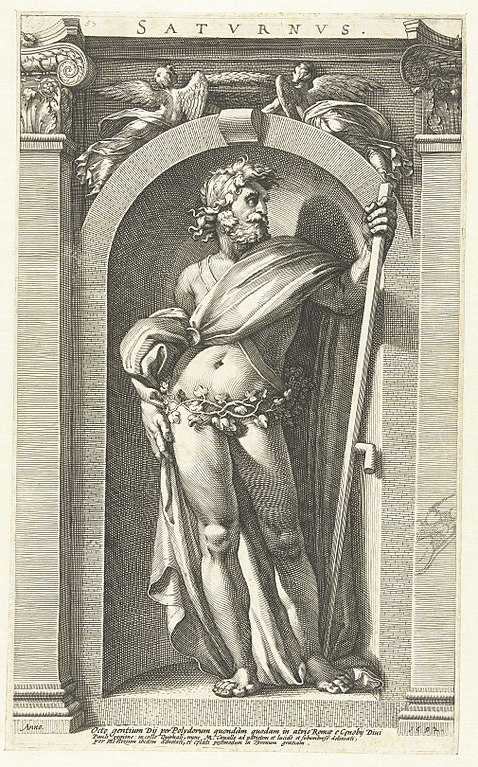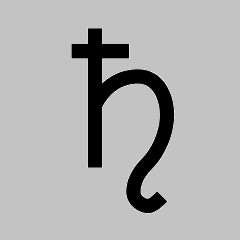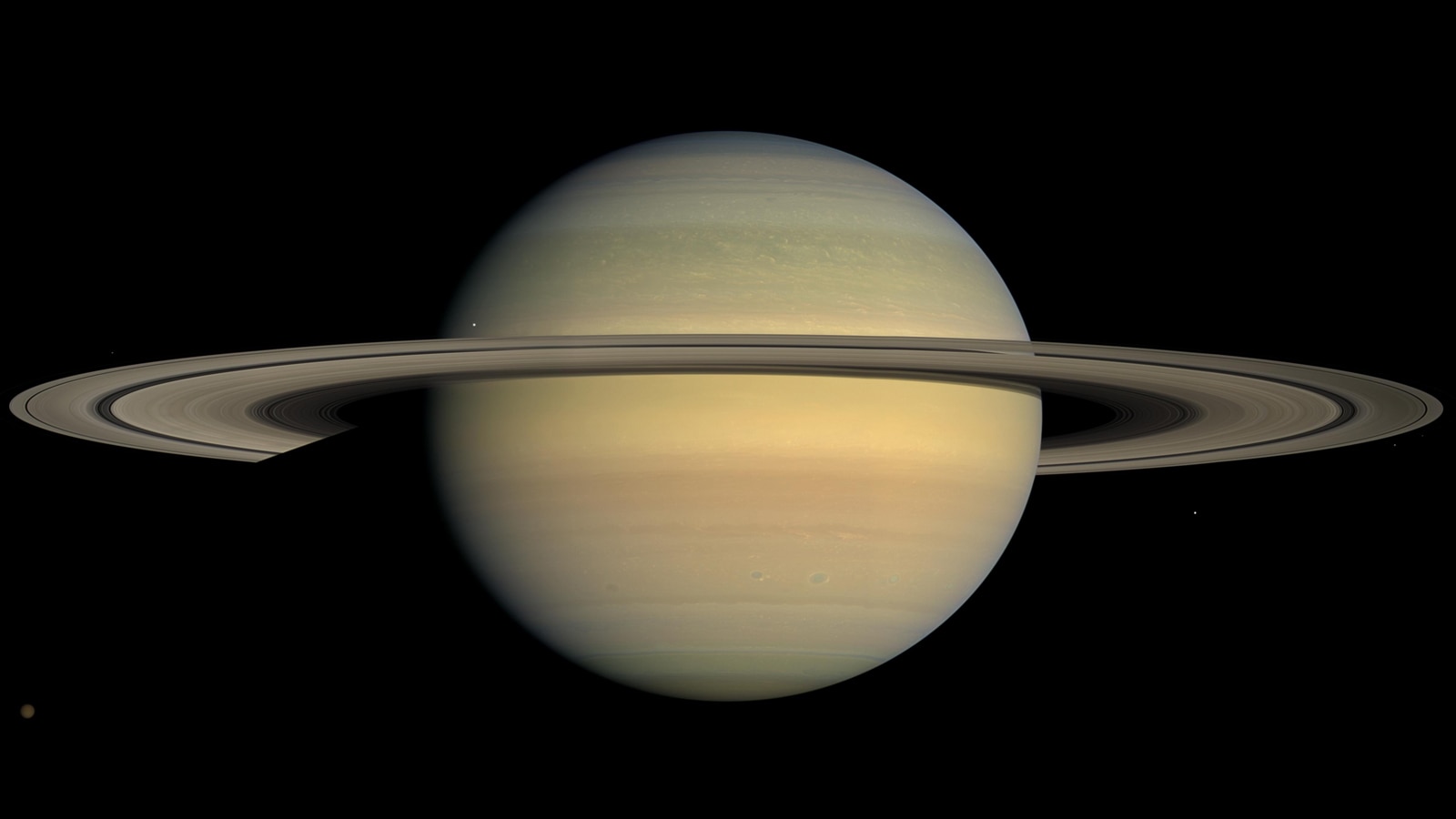
The sixth planet from the sun is Saturn. It, like Jupiter, is a giant gas planet. Saturn is the second largest planet in the solar system. The planet was named after the ancient Roman god of agriculture and time. The ancient Greeks called him Cronus. The astronomical symbol resembles the small letter h, but it is not that letter. It represents the ancient Roman god's sickle.

Saturn reaches its most distant point from the sun at about 947 million miles (about 1.5145 billion kilometers). It reaches its closest point to the sun at about 845,345,000 miles (about 1.35255 billion kilometers). It completes an orbit around the sun in 29.4571 Earth years (10,759.22 Earth years). One Saturnian day lasts 10 hours 33 minutes.
Like Jupiter, Saturn consists mainly of hydrogen and helium. It lacks a well defined surface, but the core might be solid.
The planet gives off two and a half times more light than it receives and is the only planet in the solar system that is less dense than water. Mean surface temperatures on the planet may range from -218 ºF (-139 ºC) to -308 ºF (-189 ºC). The surface gravity is 1.065 times that of Earth's. Its magnetic field is slightly weaker than Earth's.
A system of rings surround the planet. The average thickness of the rings is 66 feet (20 meters). The rings consists primarily of frozen water and trace amounts of carbon and other impurities.
In addition to the rings, there are 62 moons known to orbit the planet. The largest moon, Titan, is the largest moon in the solar system and possesses an atmosphere.

